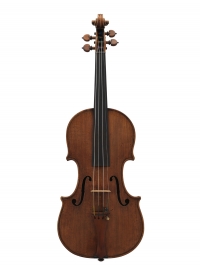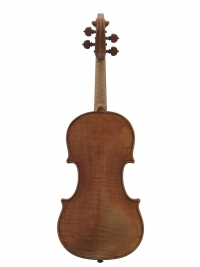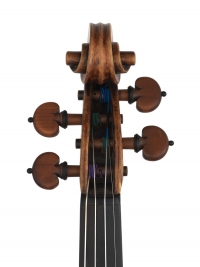|
Tags: Carlo Bergonzi | violin
Carlo Bergonzi was one of the best-known Cremonan violinmakers of the 18th century. Today, his violins, characterized by a rich, beautiful tone, are considered to be on a par with those of Stradivari and Guarneri.
Bergonzi’s early pieces are full of elegance, with two distinguishing characteristics: the pronounced “ear” on the head of the violin, and the squarish sound box. The scrolling on the violin head is very distinctive, with extremely neat and precise carving, which was far different from those made by Cremonan violinmakers at that time. Apart from the evident ear on the violin head, his works are also characterized by their slim waist, and the two protrusions above the C-peg, which give the sound-box its rectangular appearance. This style was characteristic of the Guarneri family. The beautifully carved F-hole clearly reflects the influence of Antonio Stradivari, although generally the shape is slightly longer and wider. When scrutinizing carefully, we can see that the pin dots on the back of the violin are square rather than round, showing a highly characteristic detail of Bergonzi’s work. Early Bergonzi violins have a reddish lacquer similar to that of Stradivari violins, except the layering is thinner and the color more intense. However, their unique sound appears quite indistinguishable. Owing to their rarity, Bergonzi violins are usually owned by collectors rather than musicians.
The violin used in this recording was made in 1732, and is still in excellent condition. The shape is of typical Bergonzi style, with the back bearing small and horizontal maple-wood grain. The front was made of pinewood; the center of the violin has finer grain that becomes coarser towards the edges. The instrument was lacquered in orange-brown color. This particular instrument is renowned for its bold and rich sound, and is considered one of Bergonzi’s finest works.It was exhibited at the Cremona Museum in October 2008.
Text and images are provided by Music Digital Archives Center, National Taiwan Normal University (Digital Violin Archive Project of Chi Mei Museum)
|















